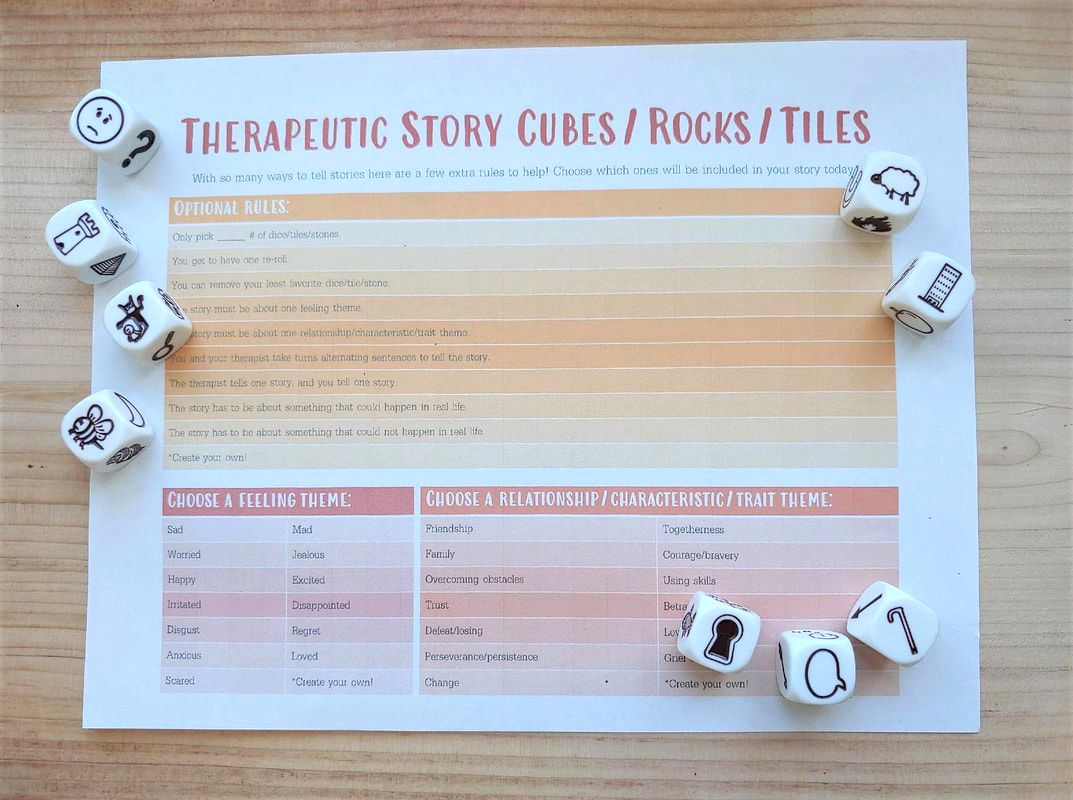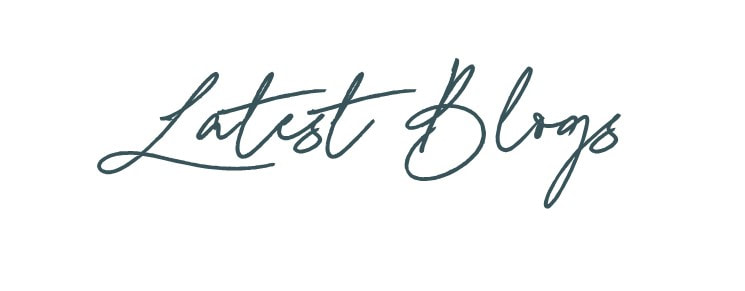|
In the world of Play Therapy there are so many ways to tell stories. Bibliotherapy (which I talk about here, here, here and here), Sand Tray, puppet shows, art, aaannnnd nearly any other way- both with or without - your favorite toys and gear. As Lisa Dion would say - YOU are the most important toy in the Playroom! Well, to add one more tool to your toolbox, here is an activity for telling stories that is perfect for middle school and teenage clients! The clients that you know still want to play, okay - still need to play, but play might look a little different. These are the difficult in-the-middle young people that need something a little more than talking but don’t typically respond to breaking out the puppets. So, I want to start off with a little story of my own. What seemed like eons ago - but was really 3 offices ago, (okay 4 if you count my pandemic home office) I fell in love with Story Stones - like these here, here, and here! I came across them on Pinterest and although the article was about homeschooling my mind definitely went to these being perfect for Play Therapy! After going to the Dollar Tree, getting some nice flat rocks, and deciding on what symbols lent themselves most to therapeutic storytelling (taking inspiration from my Sand Tray miniatures) - I busted out my paint pens and went to town! I sealed these beautiful storytelling rocks with sprayable varnish and into a little bag they went. As they found a home in my Playroom I noticed that younger clients much preferred the more traditional toys that my Playroom had to offer and I really didn’t connect the dots that older children might really get into these. Fast forward to pandemic times and I got myself some Rory’s Story Cubes after hearing fellow Play Therapists rave about them. They are fantastic for Tele-Play where I roll the dice and re-arrange them (with client direction) in sequential order for the story. AND they have definitely kept my middle school aged clients engaged, which can be quite tricky virtually. I am always a big believer with any technique of following the Golden Thread. Meaning, not just using these story cubes for fun or as a time kill BUT to meaningfully link to their goals. Okay - so here are the goals and techniques I find story tiles, cubes, or rocks MOST suited for (to name a few):
Now during my time with these cubes I was noticing I was troubleshooting several themes and difficulties. The original Story Cubes are the darkest, easiest to see on Tele-health, and are by far the most frequently chosen. If you are investing in one pack I would go with the Classic pack - they are around $13.00. I found the other packs I was having to hold the dice up to the screen more and explain the actions. I also found a lot of confusion with how to tell a story. I found I really needed to go over the basics of beginning, middle, and end. Also covering what the point of the story is and how to make it all come together. I find what comes naturally in the sand, with drawings, and Child Centered work needs to be a little bit more laid out. AND I learned that if I gave a quick example first it went muuuuch better than if I explained it and let them dive in right away. With that I usually got the “ a sad man lived in a castle with a creepy shadow. One day a bee came and landed outside of a building. The sheep used a cane and said “I need to find the key” story that was over in less than 2 minutes. And felt more like the child trying to cram in the cubes rather than making and creating a story. And both of those together? Welllll... not very therapeutic. I also found that sometimes it was good to see the first telling of the story as a “rough draft” and it was important to give it a second pass. I wanted the client to give it a go on their own the first round so the story could be authentically theirs and then “edit” the story together. On the other hand some clients really benefitted form co-telling a story where I took one sentence and they followed with another. My sentences and story themes were always tailored to what I believed they might need within the story and using nonverbal cues as a guide! Lastly, I started to develop “rules” depending on the young person and their goals for how the story would be told, themes, etc. After noticing the same questions, themes, and rules popping up, I developed them into this fun printable that is amazing for printing out and laminating. This way you can circle the rules that apply for that specific story and then just erase away for the next client! OR for Tele-Play you can screen share and decide on the rules together. Want in on the FREE printable? Grab yours HERE! Not sure you want to invest in Story Cubes? No worries - here are some completely FREE ideas here to give it a spin before committing. You can absolutely create your own with stones like I did with some paint markers and rocks or even easier yet? Copy and paste clip art into a spreadsheet or grid and either print it out and laminate. For Tele-Play you can either email it to your client, screen share on a whiteboard, or share in a Google Doc. If you are going the Google Doc route please make sure that each client has a separate file (ie copy and paste the original) to prevent a breach of confidentiality if two clients are in the same document at the same time. To get the “rolling” element you can label each photo with a number and use 1-2 dice (most clients will have on hand they can borrow from a board game) to roll the pictures for the story. You could do an unlimited number of banks of 6 to tell the story! Looking for something a little more, umm… done for you? Check out these free resources HERE, HERE, HERE, annnnnd HERE! And, however you choose to story tell don’t forget to grab your FREE download HERE! *This post contains affiliate links, so I may earn a small commission when you make a purchase through the links on this site. The best news? It doesn’t cost you a penny! Thanks for supporting my business by shopping my favorite playroom gear and accessories!
3 Comments
Cathy Infanti
1/11/2021 04:30:25 pm
Thank you for all of these amazing ideas! I have shared them with my co- workers. We are all school-based therapists.
Reply
Marisa
2/14/2024 06:15:04 am
The link to Rory's story cubes currently goes to rat traps :(
Reply
Ann Meehan
2/14/2024 07:46:15 am
Oh my goodness what a surprising and hilarious plot twist. The link should be corrected now!
Reply
Leave a Reply. |
Hi, there!I'm Ann Meehan, an LPCC, Loading... Archives
July 2024
Categories
All
|
Privacy Policies | Terms of Use | Disclaimer
Contact
[email protected] | Copyright Meehan Mental Health Services 2022
Contact
[email protected] | Copyright Meehan Mental Health Services 2022





